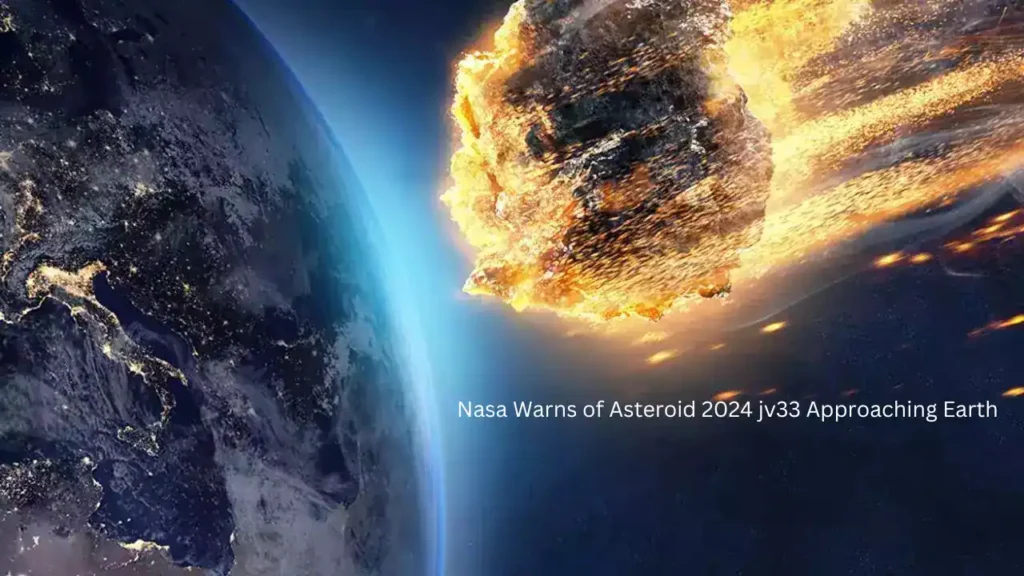
Introduction to asteroid 2024 jv33
Asteroids have always sparked fascination and fear, captivating our imagination while also posing real threats. Recently, an alarming announcement from NASA has brought asteroid 2024 JV33 into the spotlight. As it approaches Earth, concerns grow about its potential impact and what that could mean for our planet.
NASA’s rigorous tracking methods reveal just how close this celestial body is coming to us. But what does this really mean? Are we in danger, or can we breathe easy? Let’s explore the details behind this cosmic visitor and understand why staying informed matters now more than ever.
NASA’s discovery and tracking of the asteroid
NASA recently made headlines with the discovery of asteroid 2024 JV33. This celestial body is on a trajectory that has captured the attention of astronomers worldwide.
Using advanced telescopes and tracking systems, NASA identified this asteroid as part of their ongoing efforts to monitor near-Earth objects. The agency employs sophisticated algorithms to calculate its path and predict any potential risks associated with it.
As they gather data, scientists are constantly updating their models. This allows for a clearer understanding of how close 2024 JV33 will approach Earth in the coming years.
Asteroid tracking is essential for assessing possible threats from space. NASA’s dedication to studying these objects plays a crucial role in planetary defense strategies. As more information surfaces, public awareness surrounding such discoveries continues to grow.
Potential impact and danger to Earth
Asteroid 2024 JV33 has caught the attention of experts worldwide. Its trajectory indicates a close approach to Earth, raising concerns about potential impacts.
While NASA assures us that the likelihood of collision is low, the size and speed of this asteroid warrant caution. At approximately 100 meters wide, it could cause significant damage if it were to enter our atmosphere.
Even smaller asteroids have created havoc in the past. The Chelyabinsk meteor incident in 2013 serves as a stark reminder of what can happen when an object enters Earth’s atmosphere unexpectedly.
The energy released by an impact from something like 2024 JV33 could have devastating consequences for local ecosystems and infrastructure. With so much at stake, monitoring its path becomes crucial for global safety.
Understanding these risks helps prepare humanity for possible scenarios we hope will never unfold.
Comparison to previous asteroid threats
Asteroid 2024 JV33 is not the first celestial body to raise eyebrows among space enthusiasts and scientists alike. Past threats have included notable objects such as Apophis in 2004, which initially sparked alarm with its projected close approaches.
While Apophis was later deemed less dangerous than first thought, the fear it generated highlighted humanity’s vulnerability. Another infamous example is asteroid 2012 DA14, which passed safely but served as a stark reminder of what could happen.
Unlike these earlier asteroids, 2024 JV33’s trajectory poses unique challenges for astronomers due to its size and speed. Experts are closely monitoring this situation because even minor changes in its orbit can escalate concerns.
Public awareness has grown since previous events; social media amplifies discussions about potential threats now more than ever. This heightened vigilance may help galvanize resources needed for future asteroid defense initiatives.
Mitigation efforts by NASA and other organizations
NASA and other space organizations are actively researching ways to mitigate potential asteroid threats like 2024 JV33. One key strategy involves tracking the asteroid’s trajectory using advanced telescopes. This data is crucial for predicting its path.
Another prominent effort is developing deflection techniques. These methods range from kinetic impactors, which aim to nudge an asteroid off course, to gravity tractors that use gravitational pull over time.
International collaboration plays a vital role in these efforts. Agencies around the world share information and resources to enhance detection capabilities.
Public education campaigns are also important. They inform communities about what steps can be taken if a threat arises, thus fostering preparedness.
These combined initiatives reflect a growing awareness of our cosmic neighborhood’s risks and a commitment to safeguarding Earth from potential impacts.
Public response and concerns
The announcement from NASA about Nasa Warns of Asteroid 2024 jv33 Approaching Earth has stirred a mix of emotions across the globe. Many people are feeling anxious, grappling with the uncertainty surrounding potential threats from space. Social media is buzzing with discussions and reactions.
Some individuals express skepticism, questioning whether these warnings are exaggerated. Others feel overwhelmed by what they perceive as an impending crisis. The fear of the unknown can be unsettling.
Educational institutions have also taken notice. Schools are organizing discussions on asteroids and planetary defense to help students understand these celestial phenomena better.
Communities worldwide are rallying for more transparency from officials. They want answers about preparedness plans in case of an actual threat.
This urgency reflects a growing awareness of our vulnerability in the vast universe we inhabit, highlighting how interconnected humanity feels when faced with cosmic dangers like asteroid 2024 JV33.
Importance of continued monitoring and preparation for future potential threats
The cosmos is a dynamic and unpredictable place. Asteroids like 2024 JV33 remind us of this reality. Regular monitoring is essential to understand these celestial bodies’ trajectories and potential risks.
Space agencies worldwide, including NASA, are continuously improving their detection technologies. These advancements allow for earlier warnings about potentially hazardous asteroids.
Preparation also plays a critical role in safeguarding our planet. Educating the public about asteroid threats fosters awareness and encourages support for necessary funding and research.
Collaborative efforts between countries can enhance global responses to such hazards. Sharing data accelerates the identification of threats, ensuring that we remain vigilant.
Investing in planetary defense strategies today can save lives tomorrow, making it crucial not to overlook any developments related to near-Earth objects like 2024 JV33.
Conclusion
NASA has recently raised alarms regarding asteroid 2024 JV33, which is approaching Earth. This discovery has captured attention worldwide and sparked important discussions about our planet’s safety.
NASA’s dedicated teams have been keeping a close eye on this celestial object since its detection. The agency employs advanced tracking technology to monitor its trajectory and any potential changes in course. Their mission is to ensure that we are adequately informed of any risks associated with this looming threat.
The potential impact of asteroid 2024 JV33 raises concerns among scientists and the public alike. Although it poses no immediate danger, many remember previous asteroids that came alarmingly close or even impacted Earth in history. Each event serves as a reminder of the vulnerability our planet faces from space debris.
Compared to past threats like the Chelyabinsk meteor or the Chicxulub impactor, asteroid 2024 JV33 offers insights into how far we’ve come in monitoring such objects. NASA’s robust systems allow for better preparedness than ever before, showcasing advancements in planetary defense strategies.
Efforts by NASA and various international organizations focus on developing mitigation techniques should an asteroid pose an imminent risk. These initiatives include deflection missions, improved tracking methods, and global collaborations aimed at safeguarding humanity from cosmic dangers.
Public response has varied widely—ranging from anxious speculation to calls for increased funding for space programs focused on planetary defense. People are inherently curious about what lies beyond our atmosphere; thus understanding these threats becomes crucial knowledge for society as a whole.
Continued monitoring remains vital not just for 2024 JV33 but also for countless other near-Earth objects lurking in space. Preparing ourselves involves investing resources into scientific research while fostering awareness within communities around potential future impacts.
Understanding these dynamics shapes how we approach both current challenges and those yet unknown within the cosmos surrounding us.





